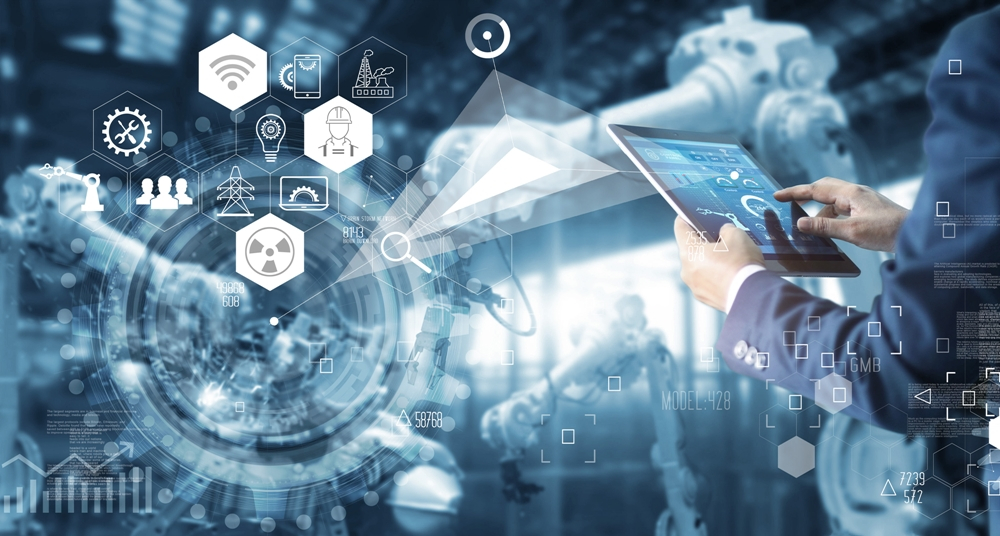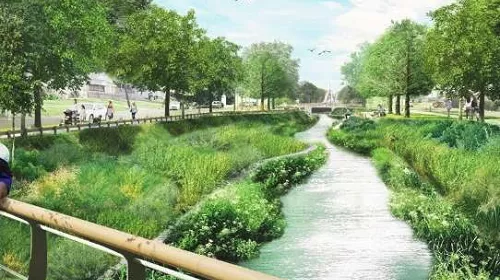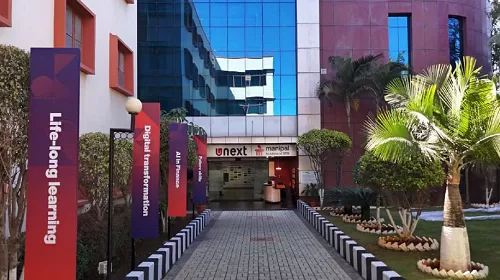By Dr. Anil Kumar Mishra, Bacteriologist, Quality Control Laboratory, Delhi Jal Board, Govt. of NCT Delhi.
Water is an essential and vital component of life and required for performing different types of metabolic activities in all types of living organisms (microorganisms to higher plants and animals). Water is also important for the environment and required for maintaining climate and other environmental components. In present scenario, water scarcity and contamination (physical, chemical and microbiological contaminants) are major problem in India and worldwide. Due to rapid growth of population, urbanization, industrialization and agriculture activities, water resources are under stress and gap between supply and demand (required for various activities like bathing, cooking drinking, sanitation, irrigation, industries etc.) increasing every year. Different national and international agencies are issuing directions/guidelines for conservation of water resources, avoid polluting water bodies/ ground water, sustainably use of water etc.
Climate change also plays a pivotal role for increasing stress on water resources due to changes in various climatic conditions like temperature, humidity etc. Worldwide, a significant number of populations not getting sufficient quantity of potable and wholesome drinking water (as per norms), resulting their health-related complexity are increasing due to different type of pollutants (Physical, Chemical and Microbiological etc.). The ground, surface water resources etc. are being utilized for drinking, irrigation and industrial and other purposes.
Water treatment is the sequential process in treatment units that improves the water quality and makes it suitable for various activities like bathing, cooking drinking, sanitation, irrigation, industries etc. Water treatment removes contaminants and undesirable components, or reduces their concentration, so that water becomes fit for its desired use. Till some decades ago, in India and some other countries, conventional water treatment technologies were in use but now some advanced and sophisticated technologies have been adopted worldwide for treatment and controlling of its process control. Now, most of the govt., are adopting the automation of treatment plants by using advanced instrumentation which are IoT (Internet of Things) based technologies and helpful for real time monitoring of all the process control units, its management from water treatment plants till consumers end. After adopting these technologies, we may solve the current global issues, such as potable water shortage, poor water quality, high process monitoring cost, energy savings, and supply costs etc. There are many advanced and sophisticated technologies available for real time monitoring of water quality parameters, operation of Chlorination system, Ozonation or other disinfectants, monitoring of proper dosing of coagulants/ flocculants etc. Internet of Things (IoT)-based control and monitoring systems
combined with SCADA (Supervisory Control and Data Acquisition) software for water management, is solutions to solve many qualities, process control and distribution network related issues. Advanced and sophisticated instrumentation is the basic requirement for most of the advanced control technologies that exist in the modern water treatment plants. The water sector is facing huge pressure due to the gap between supply and demand, required quality parameters at consumers end, population growth, climate change etc. For attainment of their targets or consumers requirements, adoption of advanced and sophisticated instrumentation and automation system may prove as a boon for utility departments.
Automation of water sectors means adopting a smarter approach, required for better management of water resources and other related activities. Digital technologies having unlimited potential to transform the world’s water systems and helping utility organizations to become more innovative, and efficient and empowering them to adopt more economically viable strategies required for better management of water from WTPs till consumer houses. Digital Control means using IoT supporting data-driven
models that can help integrate and optimize smart pumps, valves, sensors, quality parameters related equipment’s etc. and we can get all the real time information’s in smart phones that can be accessed and shared in various networks and further utility organizations may analyze, automate, correct in real time, predict and minimize risks by
adopting digital infrastructure. These will equip them to address many of the current challenges they face, including extending the life of old equipment’s and pipelines, reducing leakages, chemical and biological attacks, natural calamities or other abnormalities in the distribution network.
Reasons for lack of proper implementation of advanced instrumentation and Automation in water sectors: Although, most of the Govt./ departments adopting advanced automation and instrumentation system for coping the problems related to increasing their production to fulfil the gap between the supply and demand, process control, quality monitoring, distribution in command area, reducing man power and its operational cost etc. but due to some hurdles, it could not be adopted according to requirements. Some important hurdles are as underneath:
A. Technological reasons: Most of the departments are not well aware of the advanced instrumentation and automation technologies, which are available in the field of water treatment, quality monitoring and its distribution. They are also not well aware of the proper and right use of such types of instruments. Due to lack of this technological knowledge, departments adopt technologies that do not work properly or do not fulfil the desired purpose.
B. Financial reasons: For adoption of advanced automation and real time monitoring based instrumentation system, required a huge amount of budget; as these technologies are costly and required sufficient amount of budget for operational and maintenance cost for running it in proper way to get desired outcomes. The financial statuses of some Govt/ departments are not so good, so that they may afford its cost. This results in the fact they are not adopting such types of technologies. For solving this issue, supplier companies may reduce theirs profit margin for such type of departments (as a part of company – social responsibilities), they may also show their interest to adopt such type of technologies.
Other reasons: Sometimes, it has observed that, some employee think that due to automation and instrumentation, requirement of man power reduced and the employer department may terminate their job or in near future new vacancies may not arise. As a result, the employee unions start strikes or other such type of agitations to prevent adoption of automation and advanced instrumentation technologies. Sometimes, it has also observed that some department adopt the automation process but due to negligence/ unawareness about the technologies/ its process control, it’s not working properly for long time and that department again not take initiatives for automation/ advanced instrumentation system and they think that their conventional system is good and no requirement of any advancement in the field of process control, its management and monitoring.
Benefits of Automation and advanced instrumentation: By adopting advanced and sophisticated instrumentation and automation system, we may overcome many problems related to production, quality, supply, management and other issues related to water treatment in treatment plants and distribution till consumers end in supply network system. Some important benefits are as underneath:
A. Reduced Man Power: If we adopt advanced automation and instrumentation right from raw water treatment, quality monitoring and its distribution to consumers, most of the man power may be replaced/ deputed for another work (where automation have been not adopted). After automation, we may get precise and accurate real time data in our mobile round the clock without any interruption. This data will be more authentic than manual testing/operation. We may also retain/ retrieve this online data in the form of graphs, table or other required formats in any place or in any time as and when required.
B. Improved the performance of Treatment Plant: If, we adopt advanced automation and instrumentation system in any water treatment plant, the performance of the system may improve automatically; As, during manual monitoring of process control/ quality parameters, some errors may be possible and these errors may affect the performance of system due to repeatability of test results, calculation of results or some other ways. Due to automation, we may collect a huge amount of data in digital form and after proper analysis of this data (by using different types of software), we may take some important decisions for the further improvement of staff or process control system.
C. Save Time and man power: By adopting automation and real time monitoring technologies, we may save time, which is required to visit from one work place to another work place for monitoring/ collection of data. A single person may monitor/ record data from the main office. Senior officers may be well aware about the process control, quality and other required data from their office or home in the mobile phone/ monitor as and when required.
D. Reduced operational cost: By adopting an automation system, we may reduce the operational cost of the water treatment plant, quality monitoring etc. During manual operation we are not giving due attention to minor wear and tear of process control / testing instruments/ machinery due to various reasons; resulting, after some time its converted into a big problem and required to proper repairing/ replacement of the same, which increase the financial burden in the department. Sometimes, due to this problem, the efficiency of the machine may also be reduced or give unacceptable results. All these issues increase the operational cost of a department. But due to automation
and real time monitoring system, we may identify minor problems in the initial stage and rectify them in a very short period without any major financial involvement.
E. Improved health of the consumers: If we adopt advanced instrumentation (IoT based) for real time monitoring of water quality related parameters (Physical, Chemical, Microbiological) from water treatment plant to consumers end, then we may well aware about the water quality of particular area by proper tracking of supply network in the command area and if any contamination may arise in pipe line or any distribution network then we may rectify it as soon as possible and consumers may get potable and wholesome drinking water in theirs home. If they get good quality water, consumers will not use ground or other sources of water and they may not be affected by chronic and acute water borne diseases.
F. Reduced the possibilities of Chemical and Biological terrorism: Now a days, the way of terrorism is changing due to advancement of technologies and involvement of some qualified personnel in terrorist groups. Many countries have developed several chemicals/ biological agents (Bacteria, virus, fungi etc.) for research, development of different types of medicines or for other purposes. But if these chemical or biological agents may be attained by these terrorist groups, then they may use them as a chemical /biological weapon to create terror in the society. Water is a vulnerable source for such types of attack and thousands of citizens may be affected. But, if we adopt advanced automation and quality monitoring system from WTP till consumers end then get information about the deteriorated water quality, nature of contaminants, place of contamination etc. and we may create alert/ pre-warning system to consumers and monitoring division for redressal of the problem and save a number of precious lives.
G. For properly management of urban and industrial water supply and demand, digitalization of water meters and other systems from water treatment plant till consumers houses may be adopted or by using other suitable IoT (Internet of things) based technologies for real time monitoring of quality and quantity of water in each and every steps are also equally important. By adopting district metered area (DMA) system (means divide the particular areas into small sectors and automatic flow and pressure meters installed in required places) for proper supply and maintenance of water in particular area with sufficient pressure and this may confirm by installing water meters and other digitalized technologies in inlet and outlet point of DMA areas.
H. For proper monitoring of water network from rising mains till consumers houses, water loggers or other advanced instruments or technologies may be adopted which may easily detect leakage in underground water pipelines and take corrective measure as soon as possible to avoid wastage of water.
I. Smart water metering & remote sensing technologies are important for monitoring of the water and sanitation network, equipment management, control of water losses, and water quality etc. in remote areas of the water network.
J. Digital solutions such as network of sensors, artificial intelligent equipments (quality and process control related), real-time monitoring of data and its analysis and advanced simulation tools enable the utilities to be better prepared to theirs changing environment due to any natural or manmade calamities.
K. Digital solutions such as Advanced Metering Infrastructure (AMI) and advanced data analytics of the metering network, help to increase meter accuracy, maximize billing potential and provide an opportunity to the utility organization to add more quality and value-added services within their business models.
L. Tackling a large number of complaints regarding low pressure, odd time and low water supply are concerns that are likely to rise during calamities (natural, manmade pandemic etc.)
In conclusion we can say that by adopting advanced Automation technologies and instrumentation for the monitoring and management of process control, man power, water quality etc. from water treatment plants till consumer houses, we may overcome most of the problems related to water sectors like non-revenue water (NRW), quality monitoring, gap between supply and demand (by saving the NRW water), health of the consumers, reduced operational cost, increase efficacy of the system etc.





